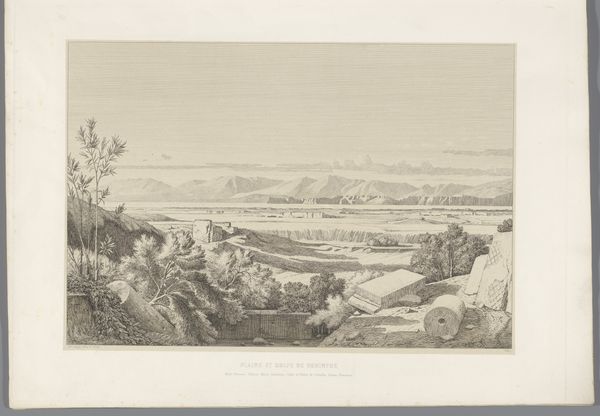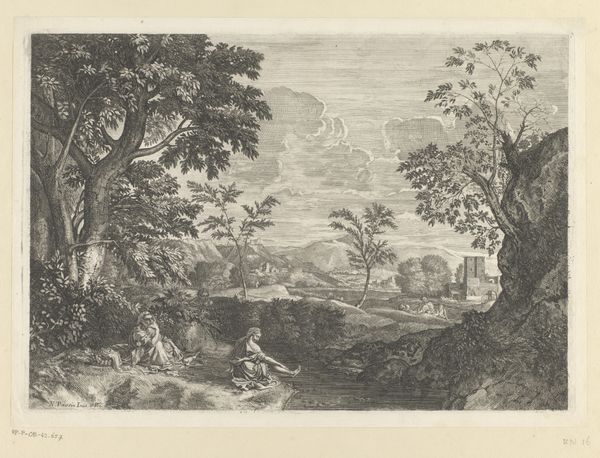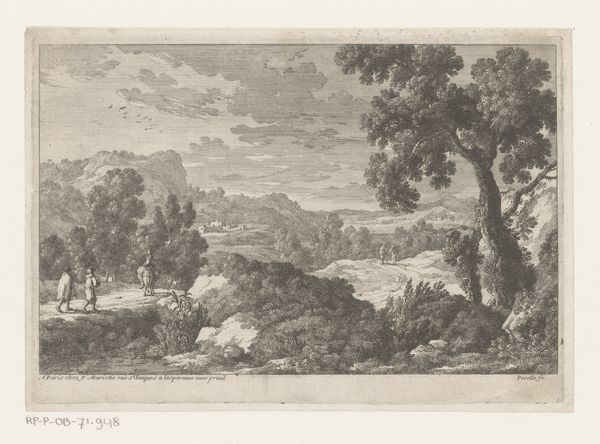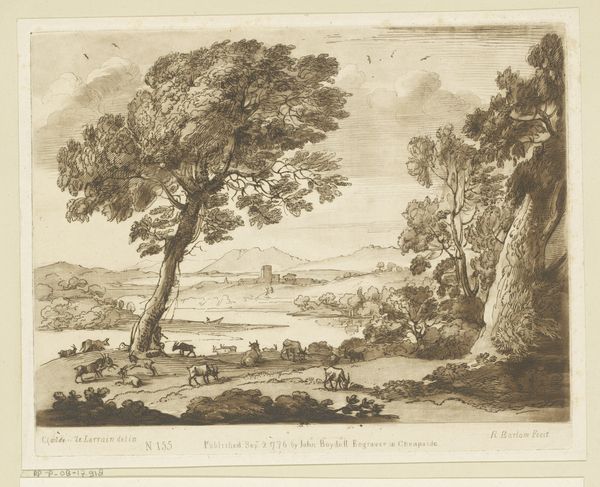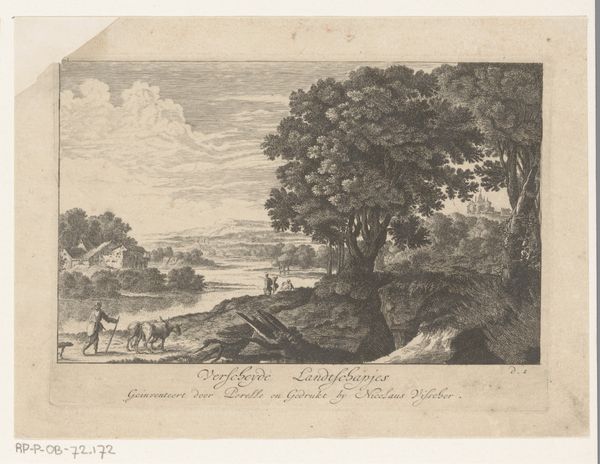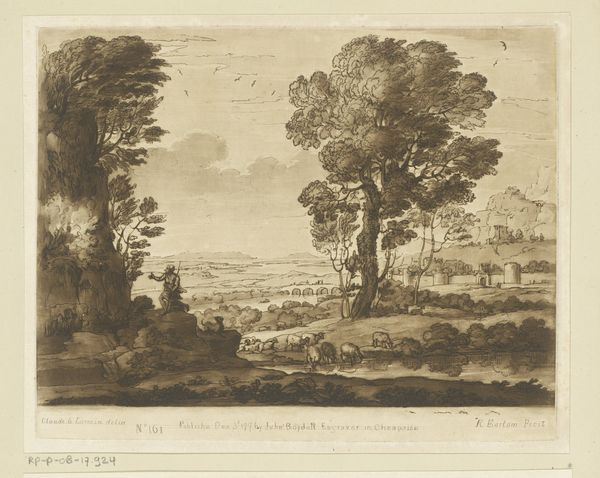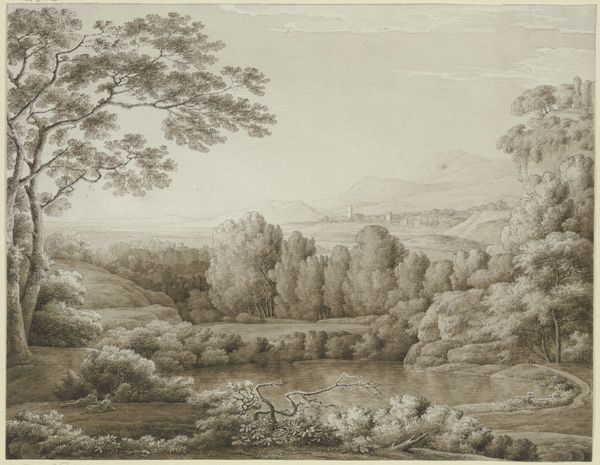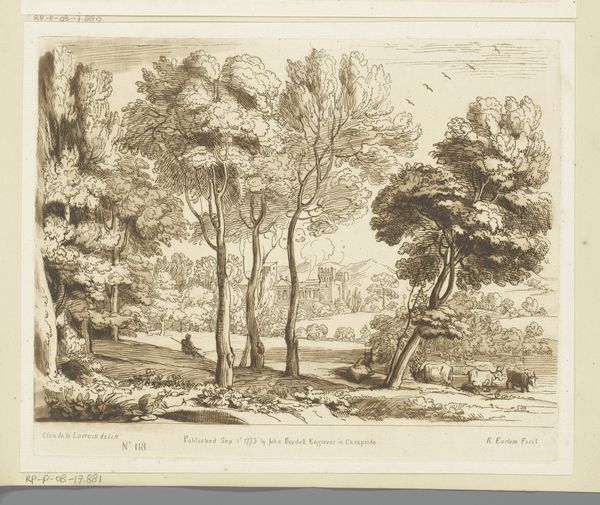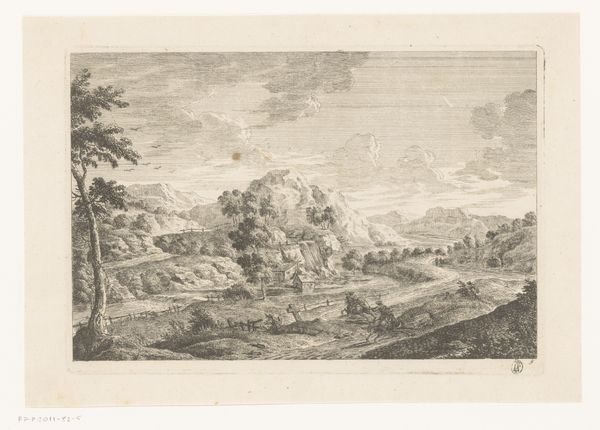
print, engraving
# print
#
old engraving style
#
landscape
#
river
#
romanticism
#
line
#
engraving
Dimensions: height 434 mm, width 598 mm
Copyright: Rijks Museum: Open Domain
Editor: This is "Gezicht op de oever van de rivier Ilisos," or "View of the Banks of the River Ilisos," an 1845 engraving by Claude-Félix-Théodore Caruelle d'Aligny. There's something melancholic about this landscape, a sense of lost grandeur. What do you see in this piece? Curator: What I see is a pointed commentary on colonialism and its impact on ancient cultures. D’Aligny presents this Greek landscape as both beautiful and decaying. Consider the fallen column in the foreground; it's a stark symbol. What do you think it represents in the context of 19th-century Europe’s fascination with, and simultaneous domination of, Greece? Editor: I guess the fallen column could symbolize the decline of ancient Greece and the looting of antiquities? I hadn't thought about it that way. Curator: Precisely. And look at how d'Aligny uses the “picturesque” style. While seemingly celebrating the beauty of the landscape, it subtly critiques the Western gaze that reduces complex cultures to aesthetic objects. It evokes Romanticism while posing questions about power dynamics. Do you see any parallels between this and contemporary issues of cultural appropriation? Editor: Absolutely! I never thought about it so critically before. It makes you think about who is framing the narrative and why. I see this piece as a wake-up call on how art can both reflect and critique society. Curator: And understanding the social context empowers us to actively challenge and reshape these narratives. This dialogue has changed my perception of d'Aligny's vision.
Comments
No comments
Be the first to comment and join the conversation on the ultimate creative platform.

